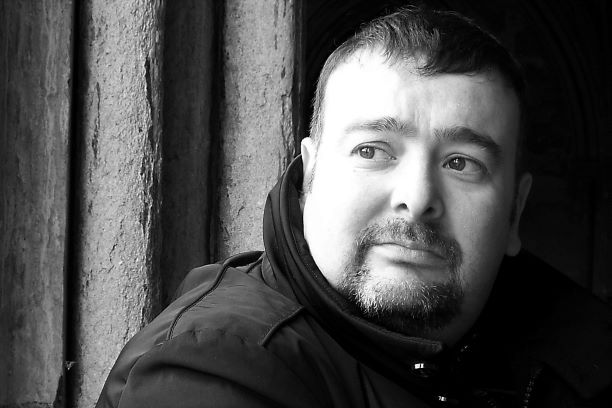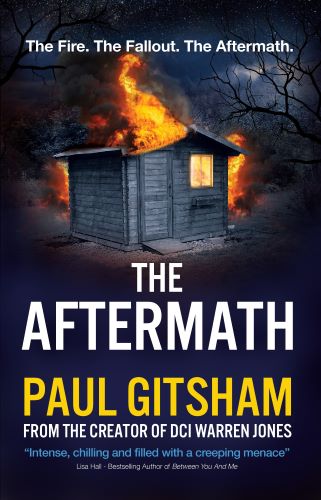If the glove fits… DNA and the modern crime novel
(Part 2)

Using DNA Evidence in your story
This week, I’m going to look at some other issues that you could perhaps use in your story.Historic and Familial DNA matches
The UK has one of the largest DNA databases in the world. Those arrested for a crime routinely have their DNA profile taken and added to the database, as do members of law enforcement. (Note: The rules over the retention of samples has changed over the years, and differ between the home nations. You may need to consider reading up on the rules to ensure accuracy.)
When a DNA fingerprint is taken, it will be compared across the database, and matches to unsolved cases can, and do, pop up. In recent years, some cold cases that pre-date DNA fingerprinting have been reopened and DNA samples taken from evidence kept in storage (Note: For murder, cases are never actually closed, even when ‘solved’. The evidence gathered should not be destroyed, so you can revisit a supposedly solved case). A satisfying number of offenders who thought they got away a murder or a rape 30 or 40 years ago, have been convicted when they commit an unrelated offence (eg drink driving) and have their DNA taken.
Recently, familial DNA matches have proven successful in identifying new suspects.
As explained last week, the closer two individuals are related, the more similar their DNA will be. Identical twins share 100{585f7a26aa29398920ce4fbd0bae34102c0c04c35dfeb1da0f83fb0f61bfbdd7} of their DNA (but not their fingerprints) and it is almost impossible using current technology to distinguish which twin a DNA sample has come from. Full siblings (including non-identical twins) share 50{585f7a26aa29398920ce4fbd0bae34102c0c04c35dfeb1da0f83fb0f61bfbdd7} similarity. An individual also shares 50{585f7a26aa29398920ce4fbd0bae34102c0c04c35dfeb1da0f83fb0f61bfbdd7} similarity with each of their parents.
As the distance between two individuals on a family tree increases, the similarity between them decreases. It goes without saying that this only applies to biological relations.
In this scenario, DNA taken from a crime scene doesn’t match an individual on the database, but instead partially matches a person already on the database for another reason. The police can determine that their unknown suspect was a full-sibling, or other close relation to the person already on the database, and start looking at those people as potential suspects.
How long does it take to return a DNA match?
The flippant answer is “as long as your story needs it to take”.
However, you need to have some realism, so consider these following points.
Technical limits
The actual process of matching DNA fingerprinting has become faster and faster. In principal, DNA matches can be done in a few hours these days. But when is your story set? The time taken 5, 10 or 20 years ago was much longer (side note: A workmate stopped watching the X-Files in protest, when they did a DNA match overnight. This was back in 1998. The lab we worked in had a DNA sequencer capable of doing DNA matching with the correct settings and reagents – it took us days to do something similar).
At the time of writing, DNA is sent to a laboratory to be processed, it can’t be done at the scene,
If you are writing a techno-thriller, you can play a bit more fast and loose with this and pretend that there are machines that can test a sample on site and give a quick answer. When Osama Bin Laden was killed, it was claimed that his identity was verified by comparing his DNA to his family members, before his burial at sea within 24 hours of his death. Given the speed with which this was done, one can probably assume that they had access to some pretty sophisticated technology.
Is there a queue?
Laboratories are typically overwhelmed with DNA samples, and so your sample may languish in a queue for weeks or months before it can be processed – the length of the backlog varies enormously, depending on jurisdiction, workload etc. Would your sample be seen as a priority, or is it just another serious crime – take a ticket and join the queue?
This is an invaluable tool for story-tellers. My DNA results come back when the story needs them to – I simply justify it in the narration. If they return very quickly, it’s because they authorised the cost of a fast-track service (since the UK government abolished the world-class Forensic Science Service in 2012, most DNA testing is done by commercial firms now). If it takes a bit longer, it’s because it wasn’t seen as a priority or the laboratory is over-worked. Just make it sound plausible and nobody will care 🙂
How long can DNA last?
This is a question without an easy answer. In ideal laboratory conditions (stored in a freezer, dissolved in a buffer etc) you can assume that previously extracted DNA will last forever. Samples on a properly stored dress, for example semen stains from a historic rape, can also last for decades.
Improperly stored samples are more problematic (or potentially more useful for your story!). Blood-soaked clothes etc are now kept in paper evidence bags. Microbial contamination of clothing can lead to condensation being produced; in a plastic bag this potentially leads to droplets of moisture interfering with microscopic spots of blood etc. Imagine a scenario where the exact position of blood spatter on a suspect’s clothing supports a sequence of events; then imagine what would happen to your case if droplets of moisture dampened and smeared those stains…
Outdoors, the elements can play a significant part. Contact DNA left behind by a person may be washed away, and strong sunlight may physically destroy the DNA. Dead bodies can remain useful for the purposes of identification for a long period of time, but if exposed to the elements, again decomposition can eventually destroy the evidence, or degrade it so that it is less easy to use. If a body is buried, then depending on how it was buried, and the soil it was buried in, DNA can be extracted for a very long-time indeed. Even if the body has been reduced to a skeleton, some genetic material may remain in the bone marrow etc. That’s typically where the DNA is extracted from when scientists examine Neanderthals or other, ancient human remains. Otzi the iceman was preserved in ice for over 5,000 years, making extraction and analysis of his DNA relatively easy.
Mitochondrial DNA
If a body is very badly degraded, and a full extraction of cellular DNA impossible, then scientists can sometimes extract something called mitochondrial DNA. Mitochondria are tiny structures inside our cells that help the cells release the energy needed to carry out their functions. They carry their own, small quantities of DNA. Just like the normal DNA within cells, this will mutate over time, so that people who are more distantly related will have slightly different mitochodrial DNA to those who are more closely related. This type of DNA can also be extracted from the shaft of a hair, when the follicle is no longer attached.
The problem is that mitochodrial DNA is only passed through the female line (it is carried in the egg, not the sperm). In other words, from mother to child. This means that siblings who share the same mother will have the same mitochondrial DNA as each other and their mother, and their grandmother etc. But they won’t have the same mitochondrial DNA as their father or grandfather etc.
Does this create new possibilities for your story?
I hope you have found this interesting and useful.
Please feel free to share and comment, either here or on social media.
Until next time,
Paul



















